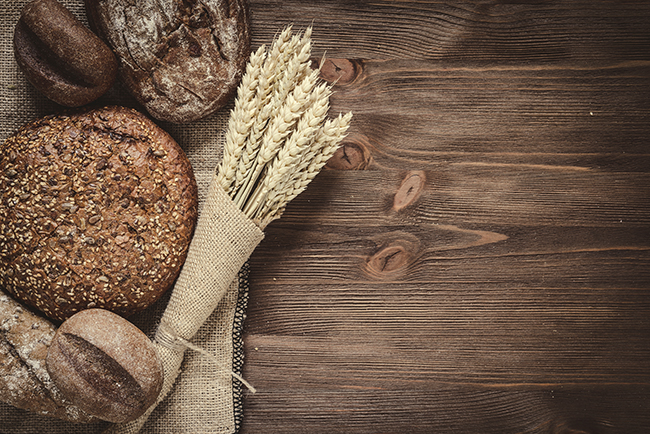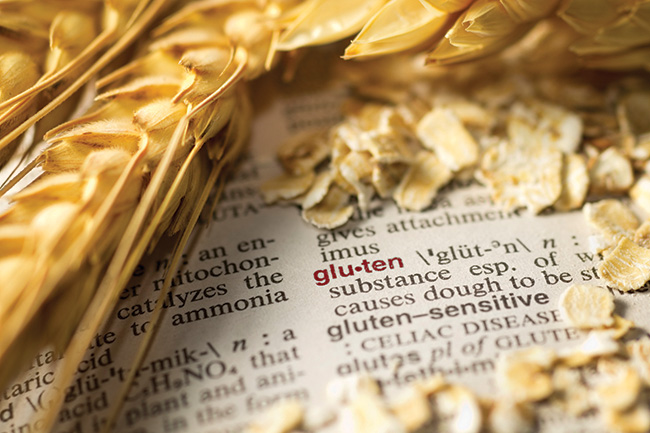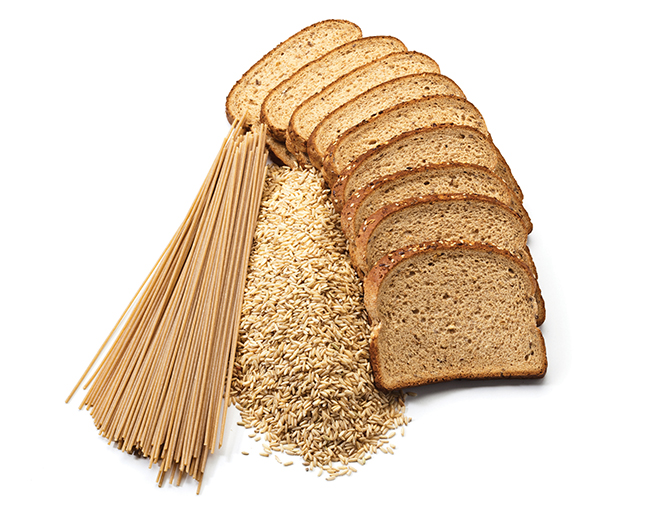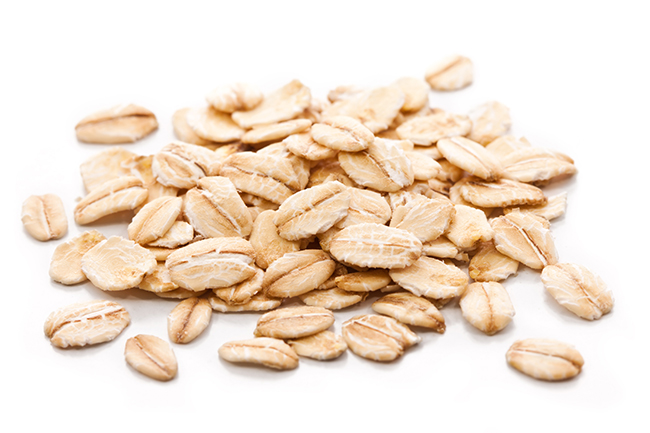The terms gluten-free and wheat-free are often used interchangeably, but they do not mean the same thing. Registered dietitian Ali Hutton explains the difference…

Many people follow a gluten-free or wheat-free diet, either to manage a medical condition or as a lifestyle choice, but with so much conflicting information and advice on health and well-being in the media, it is little wonder that people end up confused and unsure of what to do.
What does a gluten-free diet mean?
Knowing the difference between gluten and wheat is necessary in understanding how and why the various diets associated with their avoidance differ.
Gluten is a protein and is found in the centre (endosperm) of several grain kernels. In other words, gluten is part of the grain. To follow a gluten-free diet, it is necessary to avoid all grains that contain gluten. These grains include wheat, barley, rye, pearl barley and triticale.
A cause of confusion for many is that different types of wheat exist, including durum, spelt, emmer (also known as faro), einkorn and kamut. Also, while it is typically milled into flour, wheat can also be presented in other forms, such as wheat bran, wheat germ, semolina, cous cous, bulgur wheat and kibbled wheat. All types and forms of wheat must be avoided when following a gluten-free diet.
The only exception to this rule is gluten-free (Codex) wheat starch. A full list of gluten-containing grains can be found at www.coeliac.org.uk.

What about oats?
Oats do not contain gluten, but contain a similar protein to gluten called avenin, which is not tolerated by some people with coeliac disease (CD). Also, oats can become contaminated with gluten if they are grown or milled in the same environment as grains that contain gluten. It is essential that people with CD only use uncontaminated pure oats. Uncontaminated oats or oat products that contain 20 parts per million (ppm) of gluten or less, where ppm is a measure of the amount of gluten in the product, can be labelled as ‘gluten-free’. People with CD should speak to their dietitian to get specific advice and arrange appropriate monitoring if they choose to try oats.
More information on oats can be found on the Coeliac UK website.
What does a wheat-free diet mean?
Wheat is a widely-cultivated cereal grain that is important as a staple food and is used in a wide variety of products. Wheat is the only grain that must be excluded from a wheat-free diet. This means that all types and forms of wheat (as listed above), including gluten-free (Codex) wheat starch, must be avoided when following a wheat-free diet. A list of wheat-containing ingredients can be found at www.bda.uk.com.
What conditions are managed by avoiding of gluten and wheat?
Several conditions exist that are managed with either a gluten-free or a wheat-free diet. Understanding the difference between these conditions, and which diet they require, is necessary for their effective management.

What is coeliac disease?
Coeliac disease is an autoimmune disorder caused by an adverse reaction in the small bowel to dietary gluten. It is managed by following a strict, lifelong, gluten-free diet. The goal of following a gluten-free diet is to relieve symptoms, achieve healing of the small bowel, avoid long-term complications, and have a good quality of life. Accidental or intentional ingestion of gluten can result in the return of symptoms including bloating, mouth ulcers, diarrhoea and constipation in the short-term, and an increased risk of complications such as anaemia and osteoporosis in the long-term.
What is non-coeliac gluten sensitivity?
Non-coeliac gluten sensitivity (NCGS) belongs to the spectrum of gluten-related disorders. How this condition develops remains unclear. As there is no reliable test available for the diagnosis of NCGS, it is currently defined by an improvement in symptoms following the introduction of a gluten-free diet, and only after CD and wheat allergy have been ruled out. Management of NCGS is based on a gluten-free diet, although it is unknown if long-term, strict avoidance of all gluten-containing products is necessary. Research is ongoing to gain a better understanding, improve management, and standardise the of diagnosis of NCGS.
Do wheat allergy and wheat intolerance mean the same thing?
The terms wheat allergy and wheat intolerance are often confused, but they are two distinctly different conditions. A food allergy occurs when the immune system mistakenly identifies a food substance as a hostile organism (known as the allergen), and overreacts by producing antibodies to attack it. The allergen must be avoided completely. In the case of wheat allergy, a strict wheat-free diet must be followed.
A food intolerance, on the other hand, does not have an allergic component. Food intolerance typically produces symptoms such as bloating, nausea and indigestion. A wheat intolerance can be managed by reducing wheat intake to a level that is tolerated by the affected individual.

How important is food labelling?
Understanding food labels can be challenging, but it is essential for the successful avoidance of gluten and wheat. In 2014, a piece of European legislation, called the Food Information for Consumers Regulation (EU FIC), changed the way allergen information appears on labels and on food that is pre-packed, sold loose, or served when eating out.
It is no longer compulsory to include gluten in the allergy information box on the packaging of foods that contain gluten. Instead, any cereals (grains) that contain gluten must be emphasised, by using bold or italics, underlining or highlighting, in the ingredients list. This presents a challenge, as it means that anybody following a gluten-free or wheat-free diet must be able to identify all sources of gluten and wheat.
An EU regulation that sets out which food products can be labelled as ‘gluten-free’ was implemented in 2012. This law is based on the Codex standard, which was set by an international body called the Codex Alimentarius, and states that only food containing 20 parts per million (ppm) or less can be labelled gluten-free. Research shows that this tiny amount of gluten is not toxic to people with CD, and they can eat unlimited amounts of products that contain gluten at or below this level.
What is gluten-free (Codex) wheat starch
Gluten-free (Codex) wheat starch is used by some manufacturers of gluten-free flour-based foods to improve baking quality and texture. Sometimes known as Codex wheat starch, this specially-manufactured wheat starch has been washed to reduce the level of gluten to 20 ppm or less. It is rigorously tested to ensure it meets the Codex standard for gluten-free, so that it is suitable for those following a gluten-free diet. However, products that contain gluten-free wheat starch are not wheat-free, and so, must be avoided by those following a wheat-free diet. Wheat must be emphasized on the ingredients list of any product that contains gluten-free wheat starch.
The table below provides a summary of label claims and their respective meanings. It is no longer possible to rely on voluntary label claims or allergy boxes on packaging, and instead, the ingredients list should always be checked for sources of gluten and wheat.
Conclusion
Understanding the difference between the terms gluten-free and wheat-free, and the conditions, diets and food labelling associated with them, is necessary for people to make informed decisions and the right choices to implement these diets safely and effectively, and to empower them to manage their short and long-term health and well-being.

References are available on request. Please email nick.gregory@anthem-publishing.com.
